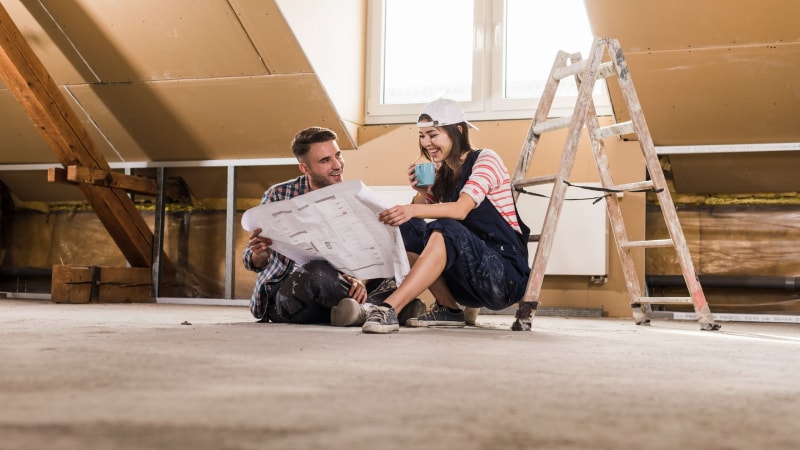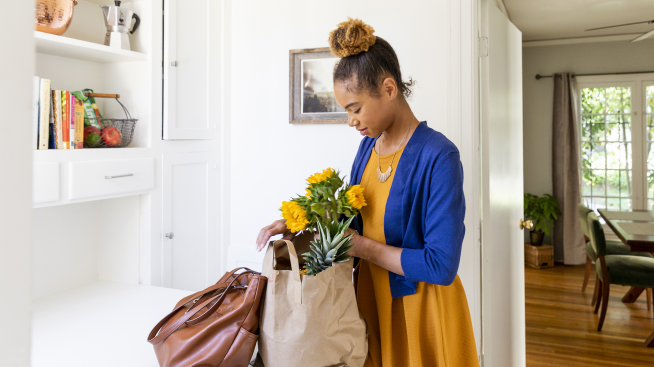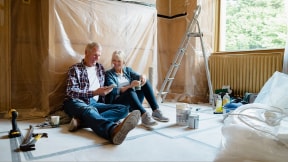Home fire safety: A homeowner’s guide

A solid understanding of fire safety is generally beneficial, but especially so if you’re a homeowner or homebuyer. Home fire safety precautions could help protect people, pets and property in the event of a fire incident. Homeowners are generally responsible for keeping their property safe, and learning home fire safety practices might help you protect your home and the people in it.
Common household fire hazards
When thinking about fire safety in the home, being aware of common household fire hazards is a good place to start.
- Cooking appliances: Cooking on a burner or grill could lead to accidental flames if left unattended, as the oil or grease could potentially ignite, or splatter onto other flammable material nearby.
- Unattended candles: If left unattended or placed close to flammable objects, candles and incense may lead to household fires.
- Smoking indoors: A still-burning cigarette butt that’s been nonchalantly tossed near something flammable may come back to haunt you. Smoking in bed is another potential hazard, as bedding is typically burnable and could catch fire if you fall asleep with a smoldering cigarette in hand.
- Christmas trees: When dry or damaged, your old Christmas tree could potentially ignite. Faulty electric lights or nearby heat sources or candles could pose an even bigger threat.
- Portable heaters: If placed near flammable materials, or left unattended, electrical heaters or furnaces may catch fire.
- Power strips and extension cords: Damaged extension cords and overloaded power strips may lead to malfunctions and electrical fires due to sparks from exposed wiring.
- Dryers: Lint from your dryer builds up over time and is highly flammable. If left to accumulate, it may ignite.
- Faulty wiring: If you own an older or historic home and haven’t replaced the wiring, it may create a fire hazard as the insulation on older wires is more likely to be frayed or damaged enough to expose the wiring.
Creating a fire safety plan
Fire spreads quickly, so there could be limited time to evacuate a burning building. Creating a fire safety plan for your household can help you know what to do (and when) to save valuable time.
A fire could occur anywhere in your home, so it may be helpful to consider mapping out your living space and taking note of possible exits. Creating multiple escape routes in case one becomes blocked by fire or smoke may help make evacuation easier. Emergency fire ladders, which can often be purchased online, could potentially help loved ones escape from windows if stairways or hallways become impassable.
Once your plan is in place, consider practicing it multiple times per year, both during the day and at night. Since smoke from a fire tends to reduce visibility, it may help to run through the fire safety plan at night. Using your sense of touch to locate exits could help simulate a smoky, dark situation.
Fire safety equipment essentials
Fire safety equipment may also help protect your home (and its inhabitants) from flames and smoke. Smoke alarms, for example, work to alert homeowners of hazards such as burning food or smoke from an unattended candle. In this sense, they act as a preventative measure within your home fire safety toolkit. As smoke alarms are battery-powered, it may be worthwhile to test them monthly and replace the batteries as needed or once a year (whichever is first).
If you’re prioritizing fire safety for home, consider placing a fire extinguisher on every floor — plus one designated just for the kitchen. Simply having one may not be enough, however. It also helps to practice using it, which your local fire department may be able to provide training for.
Home fire safety precautions and tips
Knowing about some common fire hazards can help improve your home’s fire safety, but there are also steps you can take to actively help lower your risk.
- Consider being present while cooking, even if those ribs are going low and slow. Keeping rags, potholders, and other flammable material away from burners may also be a helpful way to limit your risk. Once you’re finished cooking, it’s generally best to turn off the stove or grill right away.
- Candles typically pose less of a risk when they’re burned on level surfaces, are extinguished instead of left unattended and kept away from flammable materials like curtains or furniture.
- If possible, smoke outdoors instead of indoors. Additionally, it helps to use ashtrays and double-check that your cigarette butts have been completely extinguished before tossing them.
- Try to make sure space heaters, portable grills and fireplaces are at least three feet away from flammable items. Ensuring these appliances are turned off after use can further help prevent fires.
- It helps to be aware of which of your decorations and household items are flammable and consider keeping them away from any heat sources.
- Try to store matches, lighters and other fire-starters safely out of reach from children.
In summary
Home fire safety is an important consideration for responsible homeowners and homebuyers. Fortunately, increasing awareness, taking preventative measures, and creating a fire safety plan can all help reduce the likelihood of fires and safeguard your home, as well as the people and possessions inside. Preparation and planning help provide the peace of mind you need to focus on other, more rewarding aspects of homeownership.



